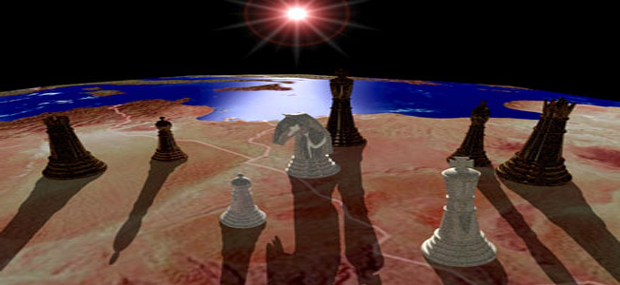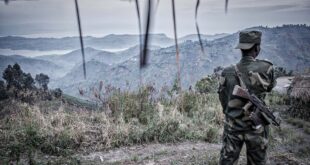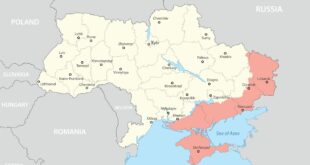By Shehab Al Makahleh
The US National Security Strategy document, which was released on December 18, 2017, marks the completion of an important stage in international relations and balance of power in international politics.
Russian military intervention in eastern and southern regions of the Mediterranean after many had started believing that Russia was a marginal power and the resumption of its military and political activities as a mediator in the Middle East has raised alarm bells in the US Congress and the Pentagon.
The resurgence of Russia
When Russia annexed Crimea in 2014 and decided to intervene in the course of the Syrian war in 2015, it became clear that Kremlin was looking beyond its borders to protect its national interests. However, a new international order is yet to fully take shape, which suggests that there will be no change in the existing order until the Syrian conflict is settled.
The US National Security Strategy document describes the existence of forces in competition with US power, namely China and Russia, which thrived under the Obama administration for Moscow and Beijing believed that the former US president was against direct confrontation with both countries and was an advocate of containment through economic measures alone. In other words, Obama tried to merely inhibit China and Russia from becoming powerful enough to oppose American policies.
In the recent years, Moscow’s expanding alliances and openness in foreign relations along with its military activities and the adoption of collective security theory with its partners has weakened US influence and there appears a shift in the center of gravity with the emergence of Eurasia.
The expanding sphere of Russian influence includes countries that were once important pillars and major allies of the US in the international sphere, such as Turkey and India. Its influence has increased through sale of strategic armaments including sophisticated weaponry. In fact, strategists believe such transactions have multiple implications.
First, Russia (through its military) and China (through its economic might) have decided to play an international role at the expense of US leadership of the world. Second, both countries seem determined to oppose US policies in many theatres, be it in Iran, Syria, and North Korea.
US Department of Defense has recently published a report stating that the US Congress had asked the Pentagon to prepare a military plan for 2018 that would allow the US to attack Russia and China with nuclear bombs without giving them an opportunity to respond.
Russia has many Muslims living in its republics and it fears that if chaos ensues in Iran, it would spread to its borders in so-called ‘Arc of Crisis’
Shehab Al-Makahleh
Conflict scenarios 2018
With the ending of terms of agreement in the de-escalation zones and possible reversion to an open-ended war — coming on the heels of the recent Iranian protests, as well as Saint Petersburg bombings (2017) — the military situation in Syria might intensify.
Things might get further complicated in view of two major events in Russia: The first being the presidential elections in March and the second is the World Cup to be held in that country in the summer. These events might influence Russian response to developments in Syria and Iran or even at its borders with Afghanistan, and Central Asia. Thus, Trump can use these cards to exert more pressure on Moscow.
It is expected that Washington will become more involved in events taking place in Iran, if not at present then at a later stage in order to achieve a set of US goals linked to preventing Russia and China from transforming the international system into a multipolar order, noting that the Sino-Iranian economic partnership in the field of energy and security, specifically in Afghanistan threatens US strategy there.
Iran’s influence in the Middle East has given strategic depth to Russia’s military presence in the eastern Mediterranean. The security of Iran, Iraq and Syria ensures a safe haven for Russia in the Caspian region due to its proximity to the Middle East. Thus, Washington finds in Iran the weakest power among its strategic adversaries, which include North Korea, Russia and China.
The US can start a process by destabilizing Iran which could then have a cascading effect on its neighbor Russia. If Washington is unsuccessful in its attempt at destabilizing Iran, it would look for other ways to confront Russia and China.
The ‘Arc of Crisis’
During US President Carter’s term in office, George Ball was appointed head of a special White House Iran task force in 1978, which recommended the President to stop supporting the then Shah of Iran in favour of the radical Islamist movement of Ayatollah Khomeini, which would instigate the balkanisation of the region along tribal and religious lines and would cause more chaos.
This explains the commonality of interests between Moscow and Tehran as Russia has many Muslims living in its republics and it fears that if chaos ensues in Iran, it would spread to its borders in the so-called “Arc of Crisis” that is likely to destabilise Muslim regions in the Russian Federation and the same applies to China.
If the year of strategic confrontation between the United States and Russia has begun with the destabilizing events unfolding in Iran, Ukraine, the Baltic and Korea, it is expected that many developments will be witnessed in 2018 on many fronts surrounding China and Russia to affect the political positions of both countries vis-à-vis international affairs.
This entails targeting the bases of Russian action in the Middle East and most importantly Iran and Syria as they both clash with the interests of Washington’s regional ally Israel which has kept raising alarm to Russians and Americans over a confrontation with Iran which is approaching its borders from Syria and Lebanon.
Thus, Israel and the US want to take the battle to Iran, a major ally of Russia, in order to put pressure both on Tehran and Moscow. Tehran by then would consider pulling out of Syria and Iraq and Russia will be in trouble once Iran retreats because of protests. However, the sphere of public discontent may expand and reach Russian territories.
__________________________
Shehab Al-Makahleh is Director of Geostrategic Media Center, senior media and political analyst in the Middle East, adviser to many international consultancies. He can be reached at: @shehabmakahleh and @Geostrat_ME.
 Geostrategic Media Political Commentary, Analysis, Security, Defense
Geostrategic Media Political Commentary, Analysis, Security, Defense





